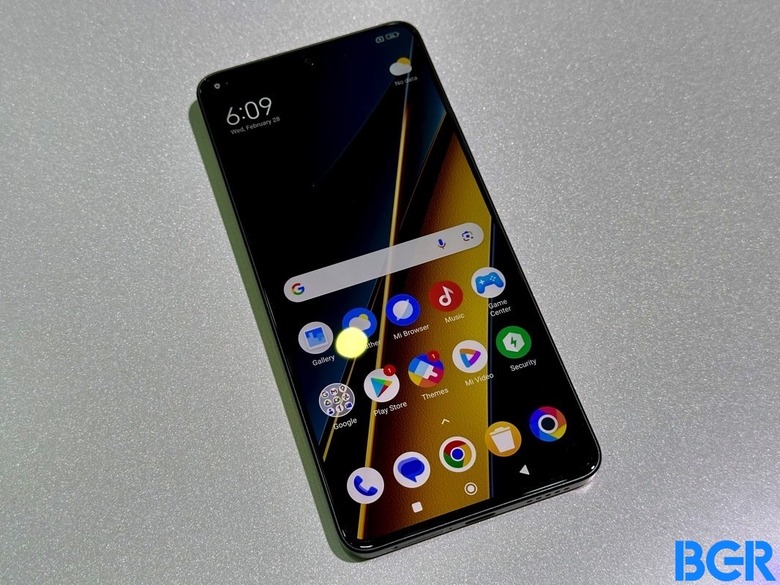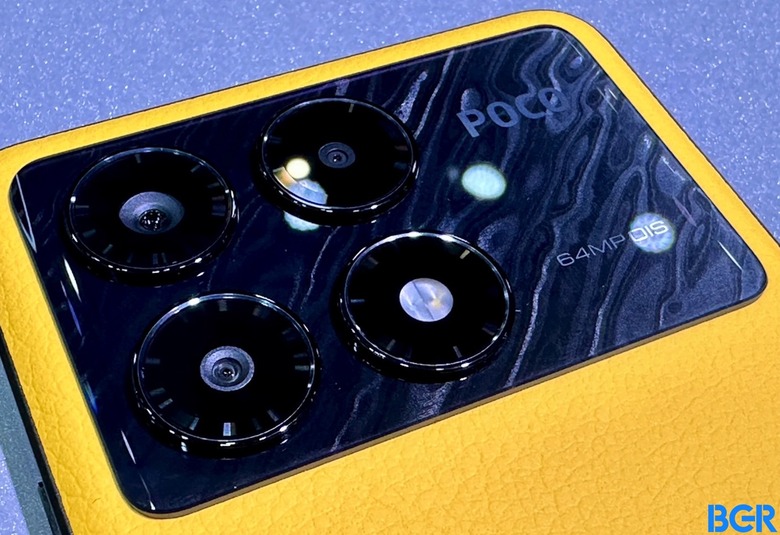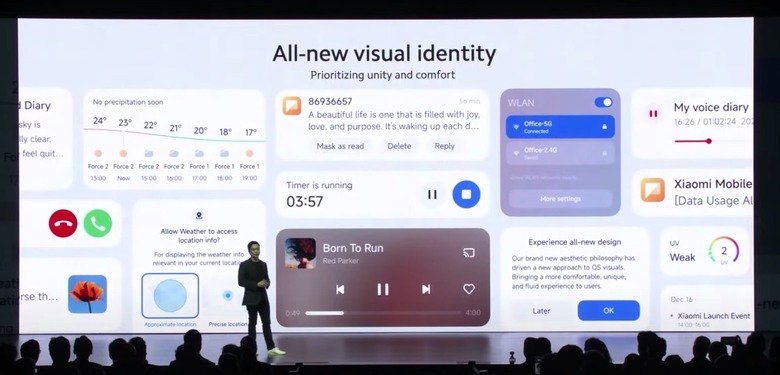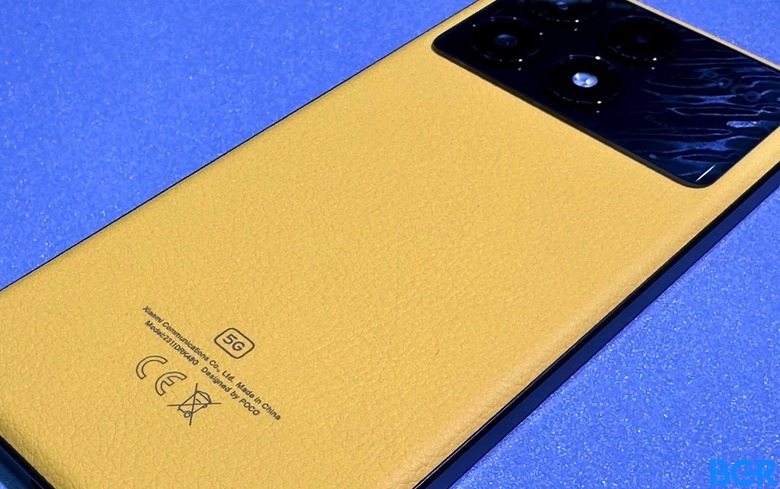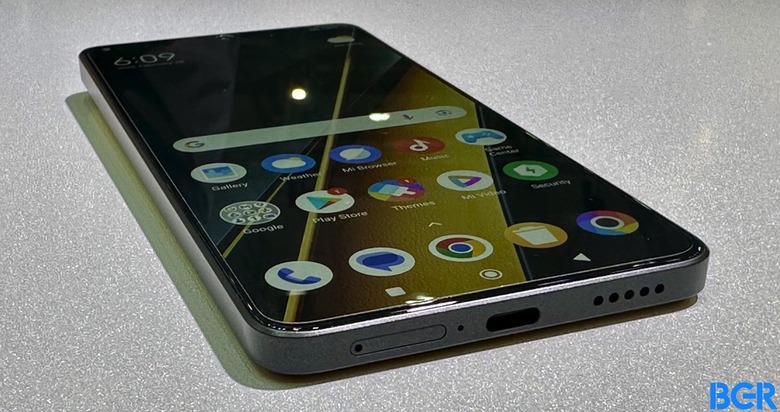A New Brand Wants To Dominate Mid-Range Smartphones, And I Found Out How They Plan To Do It
We may receive a commission on purchases made from links.
Mobile World Congress is the place where some of the world's biggest smartphone vendors launch their hottest new flagships. These are usually expensive devices targeting a specific set of buyers. MWC 2024 was no different, with the Xiaomi 14 Ultra and Honor Magic 6 Pro both debuting at over €1,200 ($1,297). Sadly, they won't be available in the US, no matter how much you want one.
But we're in a place where mid-range and especially upper-mid-range smartphones can deliver amazing performance, fast 5G connectivity, long battery life, good camera performance, and even AI. You won't miss out if you decide to choose a less expensive smartphone over a flagship handset with a sky-high price tag.
Google makes great mid-range Pixel A-series phones that are excellent alternatives to the high-end Pixels. Samsung has Galaxy A phones that you'd easily recognize everywhere around the world. Then there are brands like Nothing with cheaper flagships and even cheaper mid-rangers. These aren't the only players in a very crowded mobile landscape.
I sat down with one such company at MWC, a brand that aims to make great smartphones that are also affordable. That's Poco, a Xiaomi subsidiary you might not have heard of, especially in the US and other markets where Poco phones are hard to come by.
Poco's Head of Product Marketing Angus Ng made a compelling case for why buyers should choose Poco handsets over the competition. He also addressed some areas where Poco wants to improve in the future.
Poco's identity
While Poco operates under Xiaomi. The company is working on its own standalone products, targeting different buyers at much lower price points. Therefore, Poco phones will not necessarily inherit technology from Xiaomi or offer similar features.
The camera might be the main focus of the Xiaomi 14 Ultra. That's not the case for Poco, though Ng acknowledged that Poco wants to improve the camera experience and address concerns from customers and reviewers.
I asked Poco's global spokesperson what they're doing to create a brand identity that will generate interest from a loyal fanbase. I pointed to the early days of OnePlus and then Nothing. These are two brands that went viral. They createed followings quickly while also developing design languages that are recognizable.
Ng assured me that Poco is also working on establishing and strengthening its own identity. The rear-facing camera module block, seen above, is one way of doing it in a world populated by similar all-screen, hole-punch devices. The choice of vegan leather for mid-range phones, the focus on color experimentation like the yellow Poco X6 Pro, and the colored buttons are other elements of Poco's identity.
Let's get the AI question out of the way
It mostly comes down to price. Poco doesn't want to increase the costs of its smartphones, but it still plans to deliver the best possible experiences. That's something that came up more than once during our chat. Poco is making deliberate choices about design ideas and specs to not raise the costs.
Ng said that Poco phones will not move aggressively on AI, not at least until it's clear that buyers want AI on their phones. "We do see the Xiaomi launch, definitely, and also Samsung," Ng told me.
"They're all about the AI. So we do understand how cool AI is and how amazing it could be. But as of right now, we're still having a discussion and debate of how available these Al capabilities are going to be present for the users on a daily basis."
Poco will use Xiaomi's wide resources for other things, like customer care. Poco phones can be serviced everywhere you find Xiaomi retail stores. And the newly announced Poco X6 Pro mid-range phone runs HyperOS out of the box. Xiaomi's revamped UI for Android was a big focus during the Xiaomi 14 Ultra event.
Can you buy Poco phones in the US?
Poco wants to sell its phones via e-commerce platforms rather than through stores or wireless carriers. The vendor is present in almost 100 markets, with Southeast Asia, the Middle East, and Eastern Europe being its top priorities. Expansion in Western Europe is also important for Poco, Ng said.
As for the US, Poco has seen buyers from North America ordering some of its handsets from Chinese e-commerce sites, even if that means paying extra taxes. Poco doesn't have immediate plans to expand to Amazon US or other online stores available to American consumers. Europeans, meanwhile, can buy Poco devices from Amazon's European websites.
As for the actual hardware, Poco wants to offer great smartphone experiences. That might mean sharing some research and development with Xiaomi. Or working with MediaTek and Qualcomm to choose the best chips for its handsets. On that note. Poco aims to launch five to six new devices each year. Most of them will be 5G-ready, at least the ones that cost $150 or more.
Poco doesn't want to have weaknesses
Ng said that performance has been a focus point for Poco since the beginning, and that will continue to happen. But Poco has been listening to feedback on the camera experience of its models. It's looking to improve low-light photography with its new series of phones, which all support optical image stabilization on the main cameras.
The more premium phones will deliver better camera features, starting with the next-gen F-series flagship that Poco will launch later this year. The camera will be upgraded "by a good amount," according to him.
Ultimately, Poco wants to have "no weakness" in its phones relative to the price points they're offered, whether that's the performance, the camera, or the software.
Google is another big partner, "maybe the most important partner," when it comes to software. Ng acknowledged that the software experience hasn't been perfect in the past couple of years, but Poco aims to improve it.
Furthermore, Poco is looking to offer buyers three years of Android updates and four years of security updates. It's not as good as Samsung or Google's seven-year guarantees, of course. But Poco is selling phones that are a lot more affordable than the Galaxy S24 or Pixel 8.
Chargers and a growing ecosystem
On the other hand, unlike other companies, Poco will continue to provide chargers with their handsets. The Poco X6 Pro in the images above supports 67W fast charging, which is actually quicker than the Galaxy S24. It needs a charger to do that, and Poco wants buyers to get it out of the box.
Ng noted that the environment is something Poco can improve on, chargers included. As buyers transition to faster chargers, Poco might remove them from the box in the future. The company tried to sell phones without chargers a couple of years ago, but the feedback from consumers wasn't great.
Still, Poco pointed to its switch to vegan leather, like the yellow option for the Poco X6 Pro, as one way to advance its environmental agenda. A focus on recycled plastic might be another. These matters are bound to be important if Poco wants to expand its ecosystem of products further.
Ng told me the company is looking at wireless earphones and tablets as potential product additions to its growing lineup of smartphones.
Meanwhile, you'll find the Poco X6 Pro high-end phone in stores online. Amazon Germany sells the 8GB/256GB version for €350 ($378). That price gets you a 6.7-inch 1.5K OLED display with 120Hz refresh, MediaTek 8300 Ultra chip, LPDDR5 RAM, UFS 4.0 storage, a triple-lens camera with a 64-megapixel main camera, 5,000 mAh battery, 67W Turbo Charge, and 5G support. In addition to the charger, you also get free headphones with the handset.
The Poco X6 Pro will compete directly against the Nothing Phone 2a, the upcoming Galaxy A55, and the upcoming Pixel 8a.
